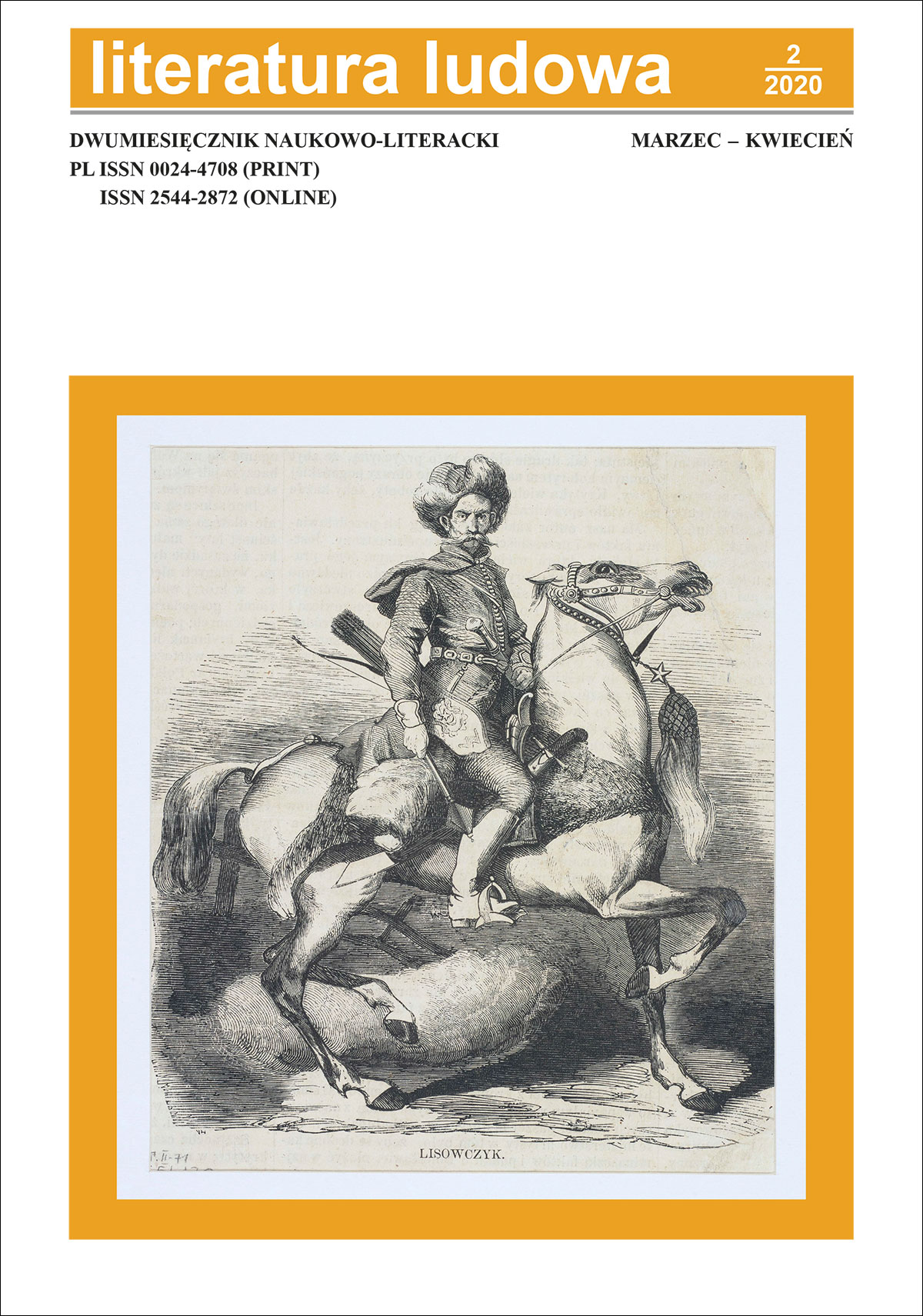Anny Brzezińskiej gry ze stereotypami. Konstrukcja postaci wiedźmy i przetworzenia motywów baśniowych w cyklu o Babuni Jagódce
Anna Brzezińska’s games with stereotypes. Construction of the character of a witch and transformations of fairy tale motives in the cycle about Babunia Jagódka (“Granny Berry”)
Author(s): Dorota UcherekSubject(s): Language and Literature Studies, Customs / Folklore
Published by: Polskie Towarzystwo Ludoznawcze
Keywords: a witch; a sorceress; Baba Yaga; fantasy literature; Anna Brzezińska’s works; stereotype; fairy tale; re-narration
Summary/Abstract: The author of the article analyzes the cycle of fantasy short stories about Babunia Jagódka (“Granny Berry”), created by Anna Brzezińska, collating the construction of the title character with the stereotype of a folk witch, and comparing the fairy tale motives contained in the mentioned works with their versions rooted in tradition, based mainly on the sources collected by brothers Grimm. The analysis shows that Babunia Jagódka is only seemingly a realization of the stereotypical image of a witch, but in fact she is a proof of playing with it and a demonstration of the character’s postmodern self consciousness. Her irreverent attitude towards tradition, connected with the concept of a witch, but also with the content of fairy tale plots, evokes a humorous effect, which at the same time draws attention to Brzezińska’s references to the comic fantasy canon, especially to Discworld by Terry Pratchett and to the character of Granny Weatherwax. The ambiguity of Jagódka suggests in turn to link her not with Grimms’ witches, but with East-Slavic Baba Yagas, featuring e.g. in fairy tales collected by Alexander Afanasyev. On the other hand, the way of transforming the fairy tale motives indicates that the analyzed short stories show qualities of re narrations: they set well known elements in a new convention, introduce fictional components nonexistent in the original variant, submit the fairy characters for psychologization, exchange their roles, contain autothematic fragments and “true”, “undistorted” versions of the fates of folklore characters.
Journal: Literatura Ludowa
- Issue Year: 64/2020
- Issue No: 2
- Page Range: 50-66
- Page Count: 12
- Language: Polish

